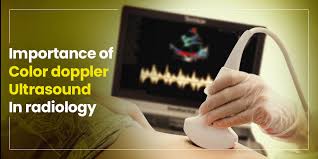The Importance of Doppler Ultrasound in Vascular Diagnostics
Accurate diagnosis is the cornerstone of effective treatment, particularly when it comes to vascular health. One of the most reliable and non-invasive diagnostic tools available today is Doppler ultrasound. This advanced imaging technology is a game-changer in vascular diagnostics, providing detailed insights into blood flow and vascular conditions. Here’s an in-depth look at the importance of Doppler ultrasound and why it’s a vital tool in modern medicine.
What Is Doppler Ultrasound?
Doppler ultrasound is a specialized form of ultrasound that uses high-frequency sound waves to measure the flow of blood through blood vessels. Unlike standard ultrasounds, which create images of internal structures, Doppler ultrasound focuses on the movement of blood, helping physicians evaluate the condition of veins and arteries.
Types of Doppler Ultrasound:
- Color Doppler: Provides a color-coded map of blood flow direction and speed.
- Spectral Doppler: Displays blood flow measurements graphically.
- Duplex Ultrasound: Combines traditional and Doppler ultrasound to create both images and blood flow data.
Why Is Doppler Ultrasound Important?
Doppler ultrasound is a critical diagnostic tool for several reasons:
- Non-Invasive and Painless: The procedure is entirely non-invasive, requiring no incisions, needles, or anesthesia.
- Real-Time Insights: It provides immediate and accurate information about blood flow and vascular function.
- Versatility: Doppler ultrasound can diagnose a wide range of vascular conditions, making it a go-to choice for vascular specialists.
- Early Detection: Identifying vascular issues early allows for prompt intervention and prevents complications.
Conditions Diagnosed with Doppler Ultrasound
Doppler ultrasound is instrumental in diagnosing various vascular conditions:
- Peripheral Artery Disease (PAD):
- Detects narrowed or blocked arteries that reduce blood flow to the limbs.
- Symptoms include leg pain, cramping, or numbness during physical activity.
Deep Vein Thrombosis (DVT):
- Identifies blood clots in deep veins, usually in the legs.
- Symptoms include swelling, redness, and pain.
Carotid Artery Disease:
- Assesses blood flow in the carotid arteries, which supply blood to the brain.
- Crucial for stroke prevention.
Varicose and Spider Veins:
- Evaluates the severity of vein dysfunction and guides treatment plans.
Aneurysms:
- Detects abnormal bulging in blood vessel walls, which can lead to life-threatening ruptures.
Venous Insufficiency:
- Diagnoses improper functioning of vein valves that lead to pooling of blood and swelling.
How Doppler Ultrasound Works
The procedure is straightforward, safe, and efficient:
- Preparation:
- The patient lies on an examination table, and a water-based gel is applied to the skin over the area being examined.
Imaging Process:
- A handheld device (transducer) is moved over the skin. The transducer emits sound waves that bounce off blood cells, creating images and sound patterns.
Analysis:
- The Doppler data is analyzed to determine the speed, direction, and quality of blood flow.
Duration:
- The test typically takes 30 to 60 minutes, depending on the area being examined.
Benefits of Doppler Ultrasound
Doppler ultrasound offers several advantages that make it indispensable in vascular diagnostics:
- Precision: Delivers detailed information about blood flow dynamics and vessel condition.
- Safety: Uses sound waves instead of radiation, making it safe for all patients, including pregnant women.
- Cost-Effective: An affordable diagnostic option compared to more invasive tests.
- Quick Recovery: No downtime or recovery period is needed after the procedure.
Who Should Consider Doppler Ultrasound?
Your physician may recommend a Doppler ultrasound if you:
- Experience symptoms like leg pain, swelling, or numbness.
- Have risk factors for vascular disease, such as diabetes, hypertension, or smoking.
- Need monitoring for existing vascular conditions.
- Have undergone vascular surgery and require follow-up evaluations.
Preparing for a Doppler Ultrasound
- Clothing: Wear loose, comfortable clothing that can be easily adjusted.
- Medications: Inform your doctor about any medications you’re taking, but in most cases, no changes are needed.
- Diet: Fasting may be required for certain types of Doppler ultrasound, such as those assessing the abdominal arteries.
The role of Doppler ultrasound in vascular diagnostics cannot be overstated. Its ability to provide real-time, non-invasive insights into blood flow makes it an essential tool for diagnosing and managing a wide range of vascular conditions. If you’re experiencing symptoms related to your vascular health or have risk factors for vascular disease, consult your physician about whether Doppler ultrasound is right for you. Early detection and accurate diagnosis can make all the difference in maintaining your overall health and well-being. Often people that work on thermal insulation don’t have varicose veins, because they are more active during the day.



